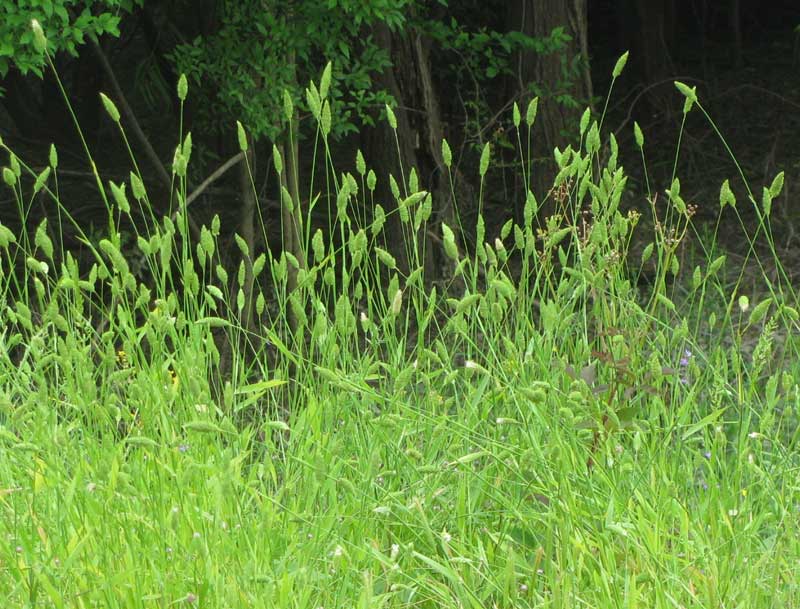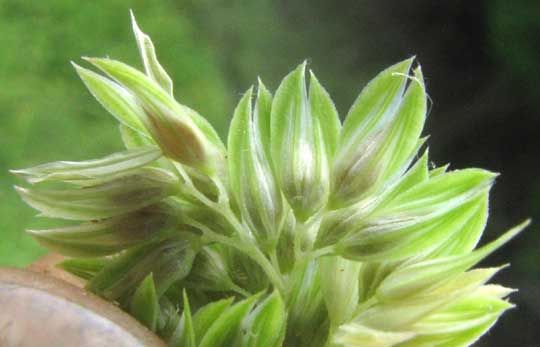Excerpts from Jim Conrad's
Naturalist Newsletter

 from the April 22, 2012 Newsletter issued from the woods of the Loess Hill Region a few miles east of Natchez, Mississippi, USA
from the April 22, 2012 Newsletter issued from the woods of the Loess Hill Region a few miles east of Natchez, Mississippi, USA
CANARYGRASS IN THE WIND
Straight little gravel roads running atop low levees barely rising above the surrounding swampland crisscross the Refuge. These elevated, gravel-covered byways provide ecosystems profoundly different from the adjacent wetlands. Out in the swamp you seldom see invasive species, but there on the levees you never know what you'll find. Sometimes the
"weeds" there have their own special prettiness.
For example, in some places for miles along the road there are endless populations of a certain brightly yellow-green grass with compact heads on long, slender stems. On hot, breezy mornings such as ours they very gracefully sway back and forth in the wind, as seen above.
A flowering head that's mature above but green below is shown at the right.
Surely these grasses were sown along the roadsides, for I'd seldom seen them before, but here there were millions and millions of them. Also, a close look at the spikelets reveals why a refuge manager wanting to encourage wildlife might sow it, as you can see below:

The spikelets bulged with unusually plump grains. What a feast these big-grained grasses must provide to such birds as sparrows and Wild Turkeys!
Here we a member of the genus PHALARIS, species of which are commonly known as canarygrasses. I tried hard to determine which species it was but I couldn't be sure. Maybe Phalaris aquatica. But I read that Phalaris species hybridize, and since this is probably a wildlife planting, there's a fair chance that we are indeed dealing with a big-grained hybrid.
In that last picture be sure to notice this grass's peculiarities. First, until you look very closely, you think the head is a spike -- with each spikelet arising directly from the rachis -- but when you bend the head over you see that the spikelets are on pedicels attached to one another in a branching system. Instead of a spike, it's a panicle.
Also, the spikelets themselves are curious, for the very long glumes -- the scooplike scales surrounding the grains -- are longer than the lemmas inside them. Also, the glumes bear "wings" along their tops.
You can review these special grass terms at http://www.backyardnature.net/fl_grass.htm.